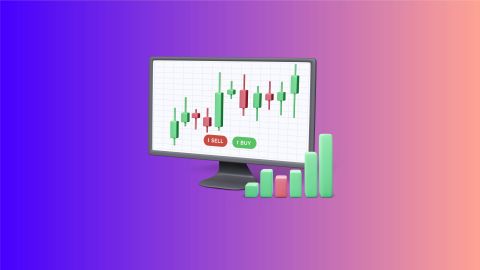Market orders are the most common form of orders placed at the exchange. Also, it is the default selection on the transaction pages of almost all online broker platforms. Usually, such orders are preferred for purchasing or selling large-cap stocks, ETFs, or futures.
For a market order, the stock quantity bought and sold is predetermined, not the price. The transactions involving such orders are underpinned by live market prices. Typically, investors monitor the movement in share prices for weeks, sometimes even months, for the stock to attain the ideal price. When an order is placed for a stock, it reaches the exchange. Then, the stock exchange aligns the buy order with a corresponding sell order, and the transaction manifests. In a market order, there is some level of risk for both the buyer and the seller.
It is possible to experience a delay of a second or more between placing an order and its execution. Therefore, the execution price of the order may vary from the initial placement value as stock market prices are rapidly changing. For instance, you place a sell order for 1000 shares when the market price is Rs. 300 apiece, but by the time it gets fulfilled, you may notice that the price of the single share falls to Rs. 299.
Additional read: IOC in share market
What Should You Know Before Placing a Market Order?
Market orders carry a slight execution risk for both buyers and sellers due to market volatility. There may be a short delay between order placement and execution, during which prices can change. For instance, if a sell order is placed for 100 shares at Rs. 200, it may get executed at Rs. 198 or lower, as prices often shift within seconds, leading to a difference in the expected versus actual price.
What is a Limit Order?
A limit order allows investors to specify both the number of shares and the price at which they are willing to buy or sell. The order only executes when the market price reaches the investor’s desired level, ensuring greater control over trade outcomes. This method is particularly useful during volatile market conditions or with illiquid stocks, where price movements can be sharp and unpredictable. However, there is no guarantee that the order will be executed.
How do limit orders work?
While placing limit orders, you have to indicate the price at which you want to buy or sell alongside the quantity. Such orders will only be processed when the desired price is realised. This price feature is the key distinction between a limit order and a market order.
Let us assume you want to buy 100 shares of Company XYZ Limited at Rs. 350 apiece. Your order will be placed with the stock exchange after you specify the quantity and price but will only be fulfilled when XYZ’s share value secures the price spelt out in the limit order. If the perceived stock price is trading at Rs. 400, the limit order will not be executed. The order will be authorised only when the stock price tamps down to Rs. 350.
If the stock price fails to achieve the prescribed share value in a single trading session, the limit order will be rescinded by your broker. If multiple investors place orders for different quantities at Rs. 350, orders will be fulfilled by the exchange on a first-come-first-serve basis, i.e., in the order of chronological ascension. It is integral to note that limit orders do not demonstrate a 100% success rate.
Limit orders are chosen when the transactions are related to thinly traded or extremely volatile securities. Therefore, they are typically used by day traders who want to earn profits by buying or selling large volumes of stocks to capitalise on the small price fluctuations occurring throughout the day.
What Should You Know Before Placing a Limit Order?
Market orders involve slight risk for both buyers and sellers because of price fluctuations during execution. Even a brief lag of a few seconds between order placement and fulfilment can result in a different execution price. For example, a sell order for 100 shares at Rs 200 might be fulfilled at Rs 198 or less if the price drops quickly, reflecting the dynamic nature of the stock market.
Difference Between a Market Order and Limit Order
Here’s a glimpse of how market order and limit order are different:
Limit orders
|
Market orders
|
Both the quantity and price need to be determined in advance
|
Only the quantity needs to be mentioned
|
Transactions will occur when the price stipulated by the investor is realised
|
Transactions are contingent on live marketplace prices
|
Closing thoughts
Limit orders and market orders have contrasting strategies and outcomes, which heavily influence their respective merits and limitations. Market orders are useful when you want to buy or sell shares quickly based on the prevailing market economic climate and not on predetermined prices. Moreover, such orders are best suited for individuals seeking long-term investments and are not concerned with the day-to-day market price movements.
Conversely, limit orders are a right fit for seasoned traders who want to exploit the short-term market volatility and book profits for their portfolio accordingly. Such orders are dynamic and nuanced in nature, so they need a higher level of expertise and insights. Irrespective of the type of order you use, it is critical that you exercise due diligence by examining the current market trends to earnestly comprehend the risks and rewards of your decisions.
Read More Articles
What is Intraday Trading
How NSE Works
What is SEBI
What is Offer For Sale
What is BSE





